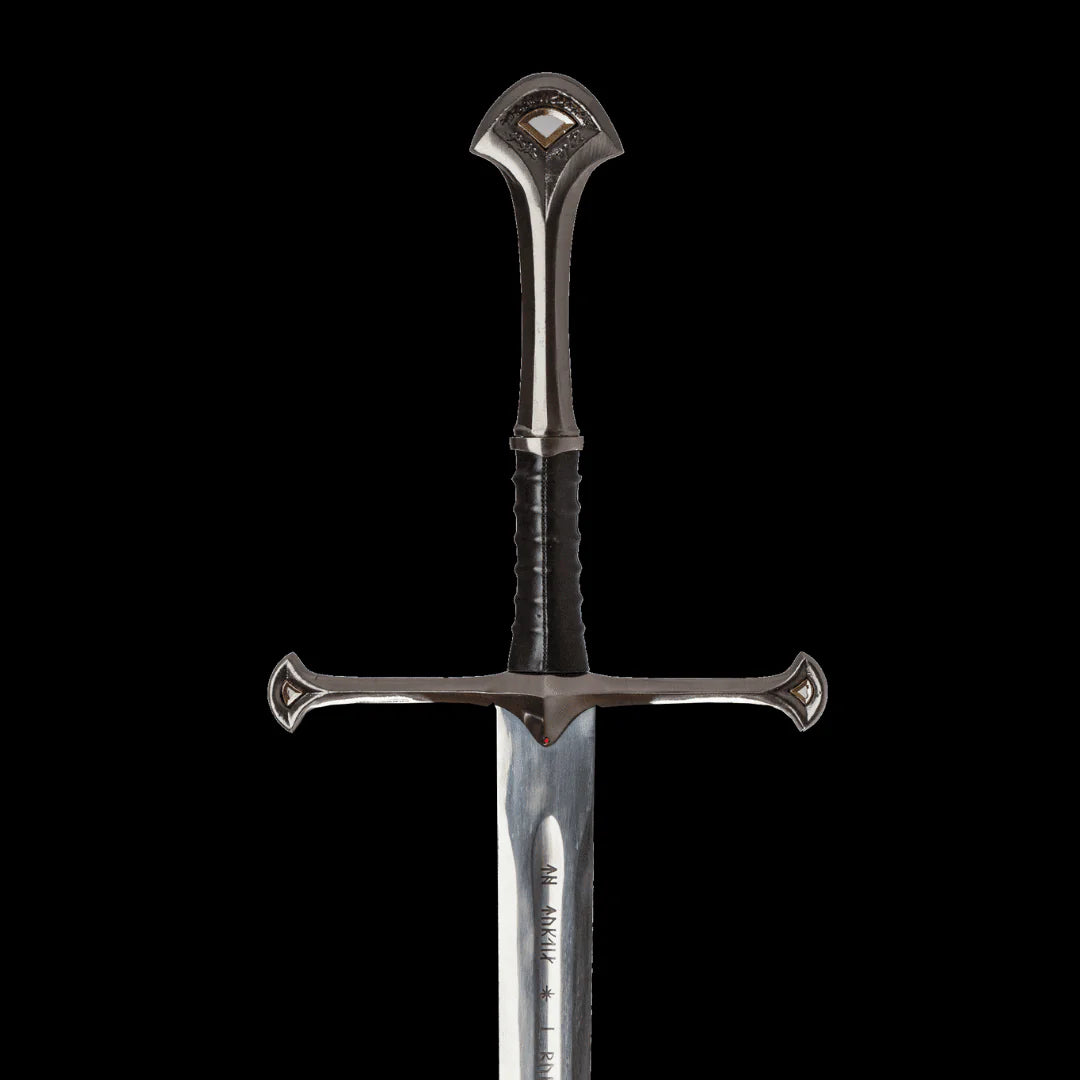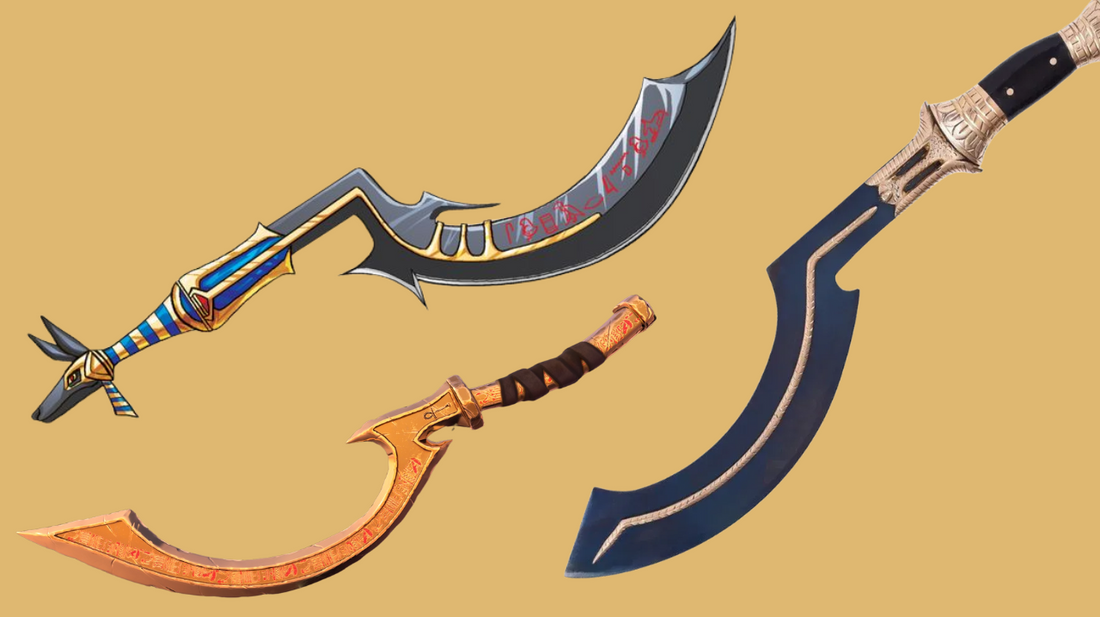






Khopesh Sword Techniques: Understanding the Mechanics of the Curved Blade
Welcome, fellow adventurer! Today, we're diving into a truly fascinating weapon: the ancient khopesh sword. You might have heard of it before, especially if you're a fan of history, ancient Egypt, or just cool weapons. But have you ever wondered what makes this sword so unique? Is it just the curve that looks cool, or is there more to it? Well, buckle up, because by the end of this article, you’ll know all about the khopesh sword techniques and why this blade played a crucial role in ancient battles.
The khopesh was no ordinary sword. Imagine a weapon that combines the sharpness of a sword with the power of an axe, all wrapped up in a beautifully curved design. The curve is the key feature of the khopesh sword, and it’s what makes it stand out from other swords of the time. But the magic doesn't stop at its shape—it’s the techniques used by warriors that truly show how deadly this weapon could be.
So, let’s travel back in time to ancient Egypt, where the khopesh sword ruled the battlefield. Get ready to learn about its history, design, how it was used in combat, and most importantly, how you can master its techniques.
Origins and History of the Khopesh Sword

Before we start talking about combat techniques, let's take a step back and look at the fascinating history of the khopesh sword. This weapon didn't just appear out of nowhere. It has deep roots, stretching back thousands of years.
The khopesh first appeared around 2500 BCE, though it became more widely used in Egypt around 1600 BCE. It was a game-changer in ancient warfare. In fact, the khopesh was one of the most recognizable weapons of ancient Egypt. Its design was so unique that it spread across different cultures, with versions of it appearing in places like Mesopotamia and the Levant.
So, where did this incredible sword come from? It’s believed that the khopesh was inspired by the battle axe, a weapon that was widely used in the ancient world. However, instead of having a straight blade like most axes, the khopesh curved inward, allowing warriors to cut, hook, and thrust in ways other swords couldn't. It was a combination of speed, precision, and strength. Pretty impressive, right?
The khopesh was particularly favored by Egyptian warriors. It wasn’t just a tool for battle—it was a symbol of power. Pharaohs often used it as a display of their authority, and it appeared in many ancient Egyptian tombs, often in ceremonial contexts. The blade was so important to Egyptian culture that it became a common feature in the artwork of the time.
But the khopesh wasn’t just for the elites. Soldiers, too, carried it into battle. This was a weapon for anyone who wanted to gain an upper hand in a fight. As we move forward, we’ll dive into the specifics of how the khopesh was used in combat, but first, let’s take a closer look at its design.
The Anatomy of the Khopesh Sword

Now that we know a bit about its history, let’s focus on what makes the khopesh so special. You’ve probably noticed that the blade has a distinctive curve. But what exactly does this shape do for the weapon? And why is it so important?
The khopesh is typically around 50 to 60 cm (about 20 to 24 inches) long, which is a good size for wielding. The blade is curved in a way that resembles a sickle or a scythe. It’s not like the straight-edged swords you might be more familiar with. This curvature wasn’t just for style—it made the sword much more effective in combat.
The curve allowed warriors to make slashing attacks that could cut through armor or strike from an unexpected angle. Imagine trying to block a sword with a curved edge—it's harder than stopping a straight blade. The khopesh's blade could get around shields, creating an opening for a quick, lethal strike.
The khopesh was often made from bronze, although later versions were crafted from iron. Bronze was a popular material in ancient weaponry due to its durability and sharpness, making the khopesh sword a formidable tool in the hands of its wielder. Iron versions appeared later and were even more effective due to the improved strength of the material.
But the khopesh wasn't just designed for cutting. The end of the blade had a pointed tip, which made it useful for thrusting. So, while the curve allowed for powerful slashes, the point could be used to stab an opponent in close-range combat. It's this combination of slashing and thrusting capabilities that made the khopesh sword such a versatile weapon.
The Curved Blade: Functionality and Mechanics
Okay, so now you know that the khopesh has a cool curve and sharp point. But how exactly did that shape work in battle? Let’s break it down.
1. Slashing: The curved edge of the khopesh was perfect for powerful slashing attacks. Warriors could swing it through the air, using the curve to create a forceful cut. This was especially effective when fighting against enemies with shields or armor, as the curve could easily slide around obstacles, reaching vital areas of the body.
2. Hooking and Trapping: One of the most unique features of the khopesh sword was its ability to hook. The inward curve allowed warriors to “trap” their opponent’s weapon or shield. Imagine trying to defend yourself with a shield, only to have the opponent's sword hook around it and pull it out of your hands. This was a common tactic used by ancient warriors, who would use the curve to control the battlefield by disarming or incapacitating their foes.
3. Thrusting and Piercing: While the curve was great for slashing and hooking, the pointed tip of the khopesh allowed for thrusting attacks. This was especially useful in tight, close-quarters combat, where a quick jab could make all the difference. The pointed end could easily penetrate armor or soft tissue, adding another layer to the weapon’s versatility.
By combining these different types of attacks—slashing, hooking, and thrusting—the khopesh sword became a powerful weapon in any warrior’s arsenal. It wasn’t just a one-trick pony; it could adapt to a variety of combat situations.
Khopesh Combat Techniques

Now that we’ve covered the basics of the khopesh sword's design and mechanics, it’s time to talk about the techniques that made it so deadly. Let’s break down the primary techniques used by warriors when wielding this powerful weapon.
1. Slashing with Power: The khopesh sword was built for speed and strength. Warriors would use the curved edge to deliver fast, slashing attacks that could cut through armor or strike from unexpected angles. The curve gave the blade a unique advantage, allowing it to cut in ways that a straight sword could not.
2. Hooking and Disarming: One of the most effective moves in the khopesh sword arsenal was the hooking technique. The inward curve allowed warriors to hook an opponent’s weapon or shield, pulling it out of their hands. This move required precision and skill, but when executed properly, it left the enemy vulnerable to a follow-up attack.
3. Thrusting for Precision: In tight spaces or against heavily armored foes, the thrust was an essential technique. The pointed tip of the khopesh sword made it easy to stab an opponent, especially in areas like the neck or under the arm where armor was weaker. The thrusting technique was especially useful for finishing off a foe who was already weakened from previous strikes.
Mastering these techniques took practice, but once a warrior learned to wield the khopesh with skill and confidence, they became a force to be reckoned with.
FAQS
How does the Khopesh work?
The khopesh works by utilizing its unique curved blade to deliver powerful and effective strikes. Its design allows warriors to use several combat techniques, including slashing, hooking, and thrusting. The inward curve of the blade makes it perfect for hooking an opponent's weapon or shield and disarming them. This curve also allows for precise slashing attacks that can slice through armor or strike from unexpected angles. The pointed tip of the khopesh can be used for thrusting attacks, making it a versatile weapon in both close combat and larger battles. The combination of these features makes the khopesh effective in a variety of situations.
Why is the Khopesh curved?
The khopesh is curved to serve multiple functions in combat. The curve allows the blade to cut through armor and shields more efficiently, making it easier to land a hit on an opponent. Additionally, the curve facilitates hooking techniques, where a warrior can use the curve to trap or disarm an enemy. This makes the khopesh particularly effective in disabling an opponent without needing a direct strike. The design also allows for more powerful slashing motions, as the curvature of the blade helps generate more force during the swing. In essence, the curve of the khopesh is not just for aesthetics—it’s an integral part of the weapon's combat effectiveness.
What are swords with curved blades called?
Swords with curved blades are generally called scimitars. The scimitar is a broad term used to describe any sword that has a curved, single-edged blade. While the khopesh is one of the most famous examples, scimitars have been used in various cultures throughout history, particularly in the Middle East, Central Asia, and North Africa. They are often associated with fast, slashing attacks and are designed to allow a more fluid motion during combat. The curvature of these swords provides the user with the ability to cut from different angles, making them highly effective in battle.
What are the techniques of sword making?
Sword making, also known as bladesmithing, involves a series of specialized techniques to create a strong, functional, and durable sword. The key techniques of sword making include:
-
Forging: This is the process of heating metal until it’s soft enough to be shaped. Bladesmiths use hammers and anvils to shape the metal into the desired blade form. The metal is heated multiple times and shaped until it takes the form of a sword.
-
Tempering: After the blade has been shaped, it's cooled rapidly (usually in water or oil) to harden the metal. This helps create the sharpness and durability needed for the blade.
-
Quenching: The blade is rapidly cooled after heating to achieve the necessary hardness, which is crucial for a sword’s edge to maintain sharpness.
-
Grinding and Polishing: After quenching, the blade is ground and polished to refine the shape, smooth out any imperfections, and give it a sharp edge.
-
Hilt and Guard Construction: The hilt, guard, and pommel are crafted separately and then attached to the blade. These parts are designed to provide balance, grip, and protection for the user’s hands.
-
Etching and Decoration: Finally, the blade may be etched or decorated with designs, which can include functional engravings or aesthetic patterns.
Conclusion: The Enduring Legacy of the Khopesh Sword
In conclusion, the khopesh sword was more than just a weapon. It was a symbol of power, strength, and innovation in ancient combat. Its unique design and the various techniques employed by warriors made it a weapon that was feared across the ancient world. Whether you’re a history buff, a fan of ancient weaponry, or just someone interested in cool swords, the khopesh sword is truly an iconic piece of history.
From its origins in Mesopotamia to its widespread use in ancient Egypt, the khopesh remains a fascinating topic for historians and enthusiasts alike. And even today, the legacy of this ancient weapon lives on in films, books, and reenactm.
